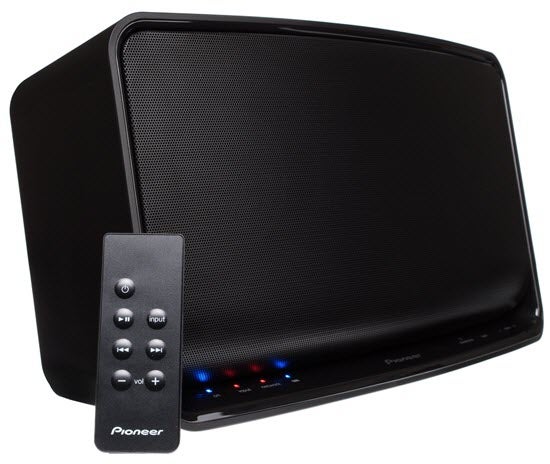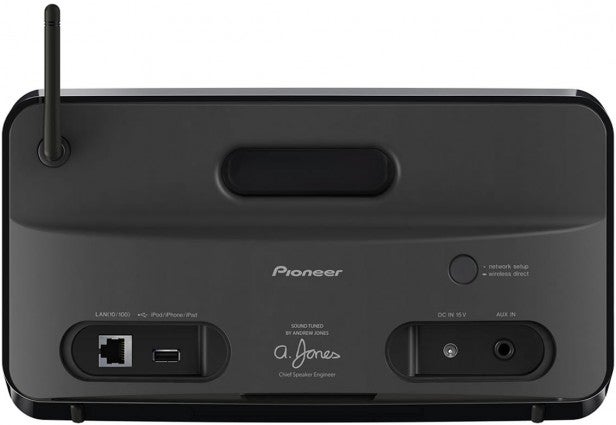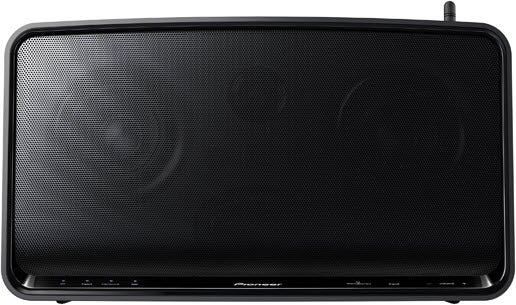Pioneer XW-SMA3 Portable AirPlay Speaker Review
Pioneer XW-SMA3 Portable AirPlay Speaker
Portable with lots of wireless connectivity, but audio could be more dynamic.

Sections
- Page 1 Pioneer XW-SMA3 Portable AirPlay Speaker Review
- Page 2 Performance, Value & Verdict Review
Verdict
Pros
- Wide variety of wireless connectivity
- Up to five hour battery life
- Plenty of bass
Cons
- Lack of detail in high frequencies
- Dull design, cheap build materials
- Not very loud
Key Specifications
- Review Price: £220.00
- AirPlay, WiFi Direct, HTC Connect, DNLA compatibility,
- Integrated battery
- 2x 10W amplifiers
- 2x 77mm woofers, 1x 25mm tweeter
- Splash proof
Introduction
Nearly two years ago we reviewed the Arcam rCube, it blew us away and we hoped it would usher in a new wave of high performance, portable speakers and docks for the home and garden. It never happened. Instead the market split into larger home-based products like the Zeppelin Air and Monitor Audio i-deck 200 while portable products primarily became smaller, cheaper but sonically weaker travel speakers, with the Pasce Minirig and Libratone Zipp rare high quality exceptions. Now Pioneer has stepped up to give the rCube a seemingly long overdue rival in the shape of the ‘Pioneer XW-SMA3-K’, which retailers are understandably shortening to the ‘Pioneer SMA3’ or even just ‘Pioneer A3’.
Pioneer XW-SMA3 – Design
First impressions are somewhat underwhelming. Take the SMA3 out of the box and you find what looks like a black, deep roasting tin with a speaker grill. Furthermore while you can at least expect aluminium construction from a roasting tin, the SMA3 demonstrates an unhealthy obsession with plastic. Front, sides and back are made up of matt black plastic, which gives it as cheaper feel than we’d expect at this price.
It isn’t all bad news though. On the plus side the plastic fetish does lead to a light weight (3.3Kg), particularly as the SMA3 packs in the aforementioned rCube-battling battery and it is compact too at just 320 x 180 x 145 mm. Furthermore the practicality continues as Pioneer covers the rear ports of the speaker with rubber seals. These look ugly when peeled back to connect cables, but they can be removed altogether then pushed back in should the SMA3 be taken outdoors as they have the useful benefit of making the speaker splash proof. 
Pioneer XW-SMA3 – Connectivity
The SMA3 is the first portable speaker of this size we have found to offer protection against water, but it is also the first in a far more interesting area: wireless connectivity. Where other speakers pick between AirPlay, WiFi Direct or DLNA the SMA3 is the first speaker we have seen to be compatible with all three and it also throws in support for HTC Connect for good measure.
Perhaps strangely Pioneer has chosen to omit Bluetooth, but this selection will allow any device with WiFi to connect to the SMA3 and enjoy high quality, lossless audio streaming. Given Apple’s frustrating refusal to licence AirPlay to Google or Microsoft and with Miracast unlikely to gain momentum for some time yet, Pioneer’s do-it-all approach is extremely welcome. 
Away from the wireless hijinks, Pioneer keeps things simple. An Ethernet port offers a wired Internet connection for firmware updates (the latest of which adds vTuner Internet radio), along with a USB port for leeching AirPlay settings straight from your phone or tablet or directly charging devices. Rounding it off is a 3.5mm auxiliary jack and a power socket. Pioneer also supplies a tiny, basic remote control. Power, playback control, volume and input buttons are all that it has, but given the wireless pretensions it won’t likely get much use.

